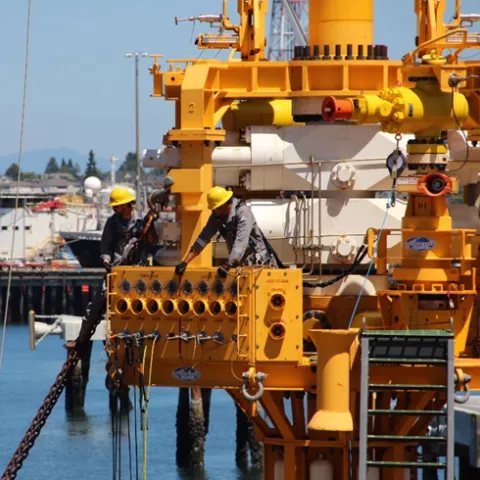About BAST
The Best Available Safest Technology (BAST) Program
BSEE is responsible for regulating activities on the Outer Continental Shelf (OCS) to ensure the orderly and expeditious development of oil and natural gas resources in a safe and environmentally responsible manner, in accordance with the Outer Continental Shelf Lands Act1 and its implementing regulations.
OCSLA empowers the BSEE Director, through delegations from the Secretary of the Interior, to “require, on all new drilling and production operations and, wherever practicable, on existing operations, the use of the best available and safest technologies which the [BSEE Director] determines to be economically feasible, wherever failure of equipment would have a significant effect on safety, health, or the environment, except where the [BSEE Director] determines that the incremental benefits are clearly insufficient to justify the incremental costs of utilizing such technologies.” This requirement is incorporated in BSEE regulations2.
1: (OCSLA), 43 U.S.C. §§ 1331 et seq;
2: 30 C.F.R. 250.107(c)(1)
BSEE developed a recurring program for identifying and evaluating candidate equipment, termed the Equipment Subject to BAST (EStB). This process is summarized in the six-step flowchart below. Please see the “Equipment Subject to BAST Process” section below for more details.

Opportunities for Public Engagement
Multiple public engagement points are integral to ensuring that the EStB Process will yield the best possible analysis. During Steps 1 and 3 of EStB Process, BSEE will issue press releases in the Newsroom and on social media platforms to notify the public of engagement opportunities. In conjunction with the press releases, the Bureau’s BAST webpage will be updated to provide detailed information on the public engagement opportunity and links to pages where available documentation is accessible during the commenting period. Directions can be found in the link(s) to the right.
BSEE has commenced the EStB process for [equipment]. This page will be updated throughout the process to ensure the public is aware when public comment is available during Steps 1 and 3 of the process. Currently, public comment is open for one or more EStB.
For the current EStB Review Cycle(s), step, and comment period, please click here or in the menu at the top of this page under the same name.
Equipment Subject to BAST
-
Screen
Step 1 is the screening of each EStB Candidate and the compilation of the calendar year EStB. During this activity each EStB candidate is screened for compliance with the EStB governing principles and prioritized against the Agency’s mission. Prior to finalizing the Calendar Year EStB, an opportunity for public engagement will be announced and the Agency will receive and consider feedback.
-
Identify
Step 2 is identifying and assembling the internal BSEE SME teams to define the relevant parts/components of each EStB candidate. A kickoff meeting is conducted to give the SME’s the guidance they need for the EStB iteration being performed.
-
Determine
Step 3 is the determination of Performance Requirements for each EStB. Internal SME Teams will determine what Performance Requirements are appropriate. In this activity there is an additional opportunity for public engagement which involves both an external SME information exchange and public feedback. Prior to finalizing the performance requirements, input from all sources will be considered.
-
Assess
Step 4 Once the EStB performance requirements have been established, a gap assessment against current BSEE regulations is performed. Identified regulatory gaps are documented, prioritized and closure options are created.
-
Finalize
Step 5 is where the gap closure options are finalized, and recommendations are compiled. The OORP Chief is presented with an EStB report containing the findings for review and consideration.
-
Implement
Step 6 is the final step of the process where implementation of selected recommendations and continued monitoring of the EStB are conducted.
What is Equipment Subject to a BAST?
EStB includes commercially available and economically feasible equipment whose failure would have a significant effect on safety, health or the environment.

